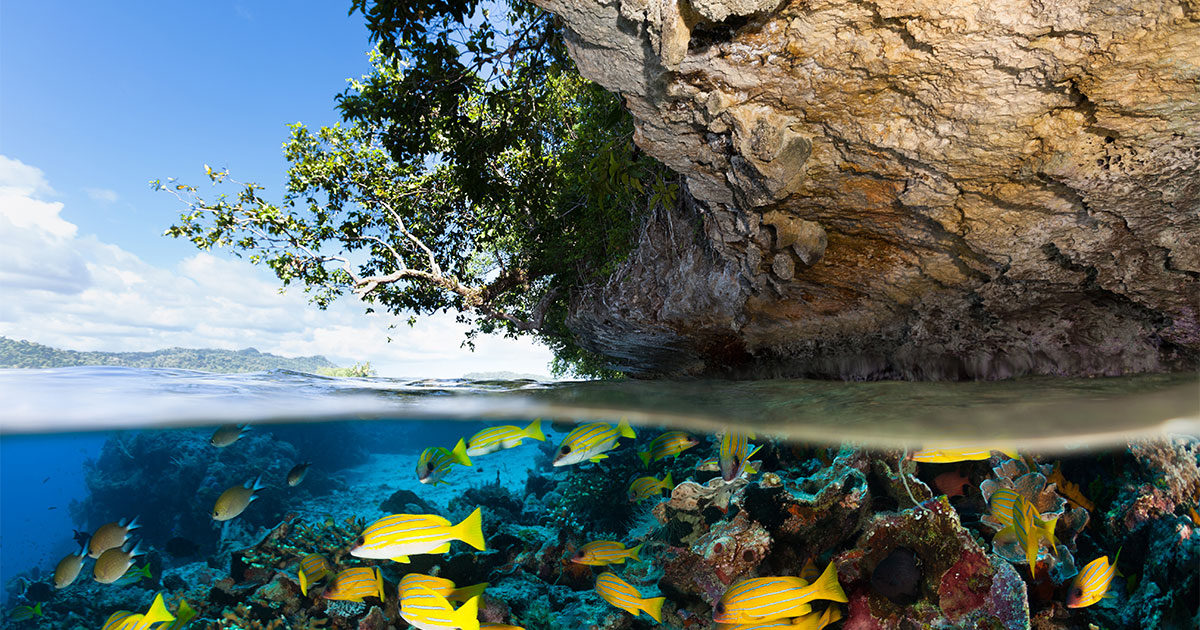As 2021 dawns, people, ecosystems, and wildlife worldwide are facing a panoply of environmental issues. In an effort to help experts and policymakers determine where they might focus research, a panel of 25 scientists and practitioners—including me—from around the globe held discussions in the fall to identify emerging issues that deserve increased attention.
The panel, coordinated by the UK-based Cambridge Conservation Initiative, conducted a horizon scan—an effort to spot early signs of significant phenomena—of global biological conservation issues. For the resulting study, which was funded by the UK’s Natural Environment Research Council and the Royal Society for the Protection of Birds, the panel winnowed down an initial list of 97 topics, settling on 15 global biological conservation issues because of their novelty or their potential to move the conservation needle in either a positive or negative direction over the coming decade. The following 7 issues concern our ocean.
Seabirds could help spot illegal fishing
Seabirds often follow fishing vessels to score easy meals. Now, scientists are hoping to exploit this behavior to help spot illegal, unregulated, and unreported fishing, which accounts for up to $23.5 billion worth of seafood every year, or 1 in 5 fish sold. Researchers have had some success attaching transmitters to seabirds to locate fishing vessels in the Indian Ocean, but more study is needed to validate the use of this tactic.
Marine vessels and GPS spoofing
Vessels plying the ocean navigate and transmit their locations and identities mainly through the global navigation satellite system (GNSS) and automatic identification system (AIS). The panel points out that a recent rise in GNSS spoofing and AIS cloning incidents could facilitate the trade of illegal goods and hamper authorities’ efforts to identify vessels engaged in illicit resource extraction activities such as illegal fishing and dredging.
More corals may suffer from lack of oxygen
Several factors—including climate-driven marine heat waves and nutrient runoff from land—can lower oxygen levels in the ocean. Corals in the Atlantic, Indian, and Pacific oceans have died from this hypoxia, and, although those events weren’t widespread, some scientists fear that the threat may grow significantly as climate change further warms the ocean. Research is needed to better understand the extent and impact of low oxygen conditions on coral reefs.
Understanding the impacts of increased dissolved iron on coastal polar ecosystems
Coastal zones in polar latitudes are among Earth’s most productive—that is, they create and support large numbers of organisms ranging from tiny marine plants to animals such as polar bears and seals—a characteristic driven by the availability of dissolved iron from glaciers and ice. Increased melting in the polar regions will result in higher iron concentrations, which in turn will probably fuel more intense phytoplankton blooms and enable organisms on the seafloor to capture more carbon and other nutrients. Such changes could have wide-ranging effects—including impacts on the structure of the region’s marine ecosystems and on carbon sequestration—and warrants investigation.
What to do with a growing number of decommissioned offshore energy platforms
It is estimated that 3,000 offshore oil and gas platforms will be decommissioned in the coming decades and that the number of offshore wind farms will continue to grow. Currently, decommissioning practices vary by country and include full removal, conversion of platforms to artificial reefs, and abandonment. As new offshore energy infrastructure is built and old platforms are phased out, nations will need to evaluate the immediate and long-term impacts of their decommissioning strategies on the marine environment.
A drug problem in the water
When some chemicals used in pharmaceuticals and in garden and farm products are introduced into waterways—usually through runoff or via sewage systems directly or in human waste—they can cause changes in fish and other organisms, including altering the number of females to males in a population, lower fertility, and deformities. There is emerging evidence that the effects of exposure can be multigenerational, affecting organisms that were never directly exposed.
A waterway to connect the Baltic and Black seas
The E40 Waterway, a planned 1,200-mile inland navigable waterway connecting the Baltic and Black seas, would alter the flow of cargo and trade in the region. However, the waterway, which would pass through Poland, Belarus, and Ukraine, could alter habitat in 70 wildlife areas and numerous international conservation areas, introduce non-native species, and change the region’s rivers and wetlands. Additionally, dredging in the Chernobyl Exclusion Zone could disrupt radioactive sediment.
The study titled ‘A 2021 Horizon Scan of Emerging Global Biological Conservation Issues’ was published in Trends in Ecology & Evolution. DOI: 10.1016/j.tree.2020.10.014
This feature appeared in Environment, Coastal & Offshore (ECO) Magazine's 2021 Spring edition, to read more access the magazine here.





